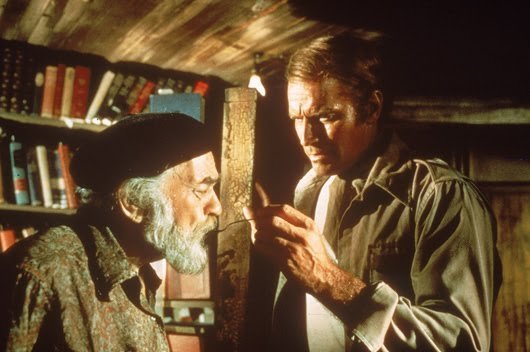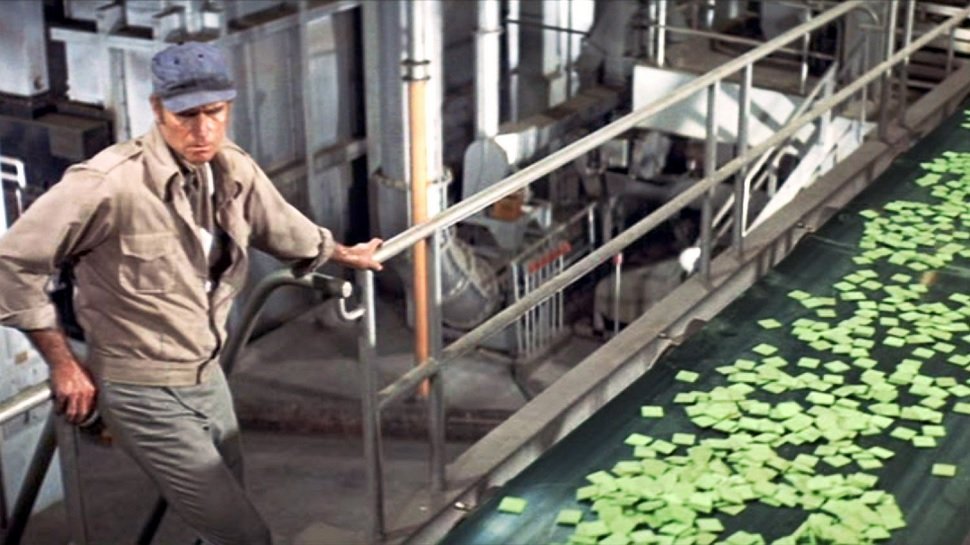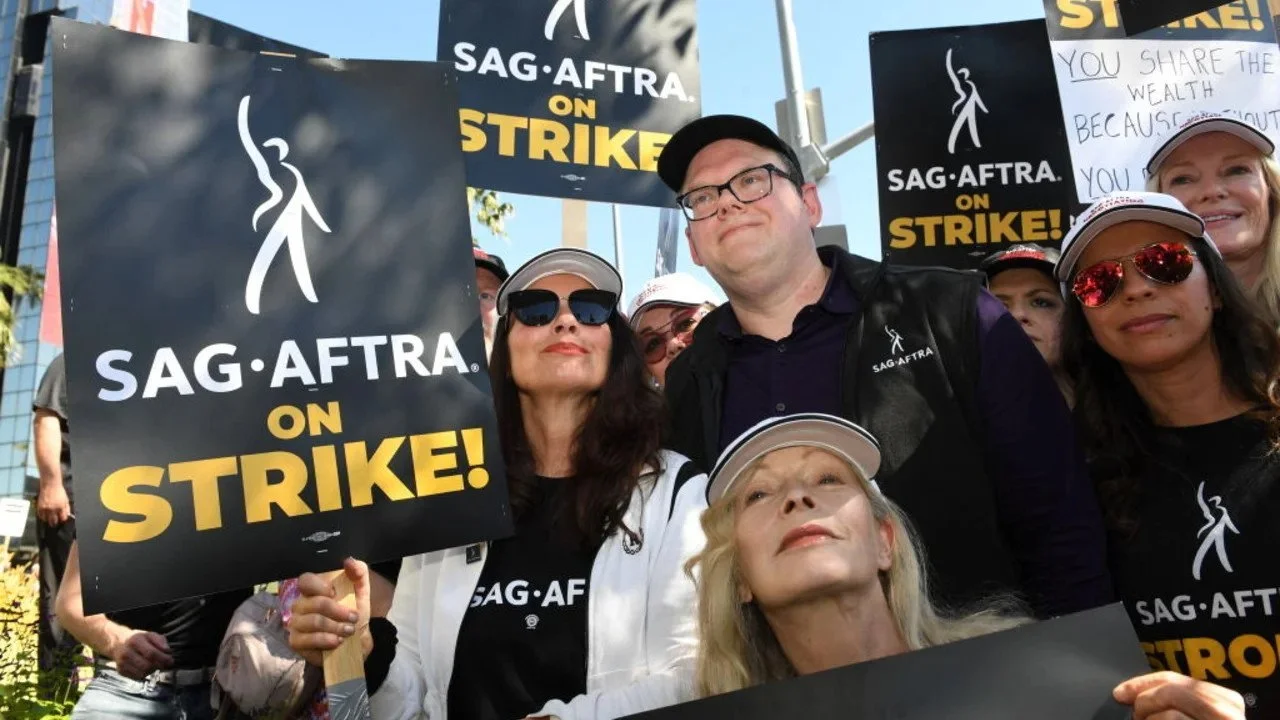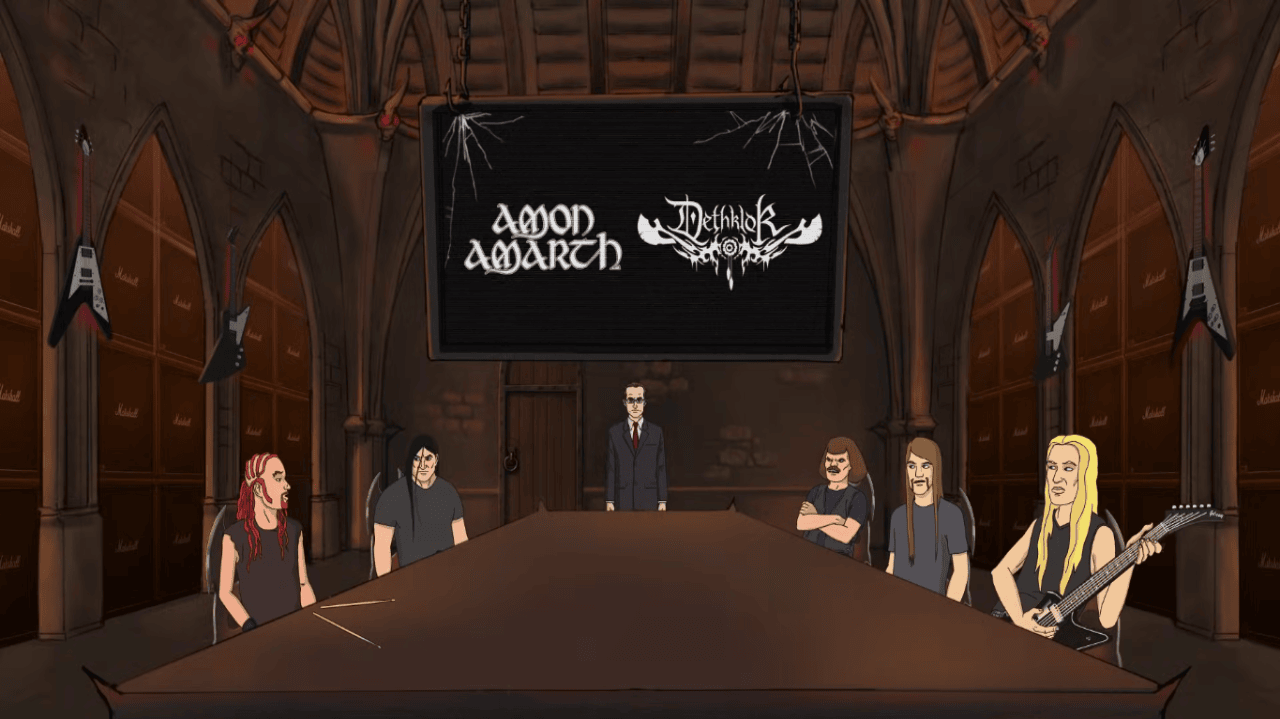Retrospective Look At ‘Soylent Green’ 50 Years Later
Image Source: YouTube
If I asked you to close your eyes and listen to me describe a movie, what year do you think it could be from? Well, picture a movie where, due to overpopulation and pollution, the earth has become over-crowded and resources are scarce throughout the world. The rich hold all the power in the world and can live in cushy places with access to all the amenities the rest of the world cannot. In this world, corporations withhold vital information from the public in order to protect their interests and the fact that they do unscrupulous things. Now what year is this movie? Could it be from the last year? Two years, or even ten years? Well, you would be wrong; this setting comes from the 1973 iconic and groundbreaking movie, Soylent Green.
The name probably sounds familiar to you because of the iconic pop culture reference at the end of the movie, but the film was so much more than just one scene. The tropes contained within are certainly common in many movies we have today, and fifty years later, it holds a significant place in the hall of fame for sci-fi cinema.
RELATED:
If you haven’t watched Soylent Green, which I would highly recommend, the movie is set in the year 2022. In this world, overpopulation and pollution have created shortages in food, water and shelter. People live in horrible conditions where they use communal water sources and essentially live off of a food source called Soylent Red, Soylent Yellow and the newly released Soylent Green. However, the rich are fine living in lavish homes with unlimited food and water. Charlton Heston plays Detective Robert Thorn, who is investigating the murder of William Simonson, a board member of the Soylent Corporation. Detective Thorn is a play-by-his-own-rules sort of detective and begins to unravel a huge mystery surrounding the new Soylent Green product. Joining Detective Thorn in his investigation is his roommate Sol Roth, aka “Book”, a former college professor with encyclopedic knowledge who comes to learn about the secret behind Soylent Green. Shiri, a concubine to Simonson, also joins the investigation.
When Thorn begins to realize that Simonson was assassinated because of a secret that could expose the Soylent Corporation, a lot of people want Thorn to stop including his superiors. But when Book decides to end his life instead of telling Thorn the secret, and Thorn realizes that the Soylent Corporation is trying to kill him, he goes off to learn the truth himself. We’ll get to the ending shortly, but needless to say, Thorn discovers the truth, and the film ends on a bit of a down note, with Thorn trying to warn the people about the truth of Soylent Green. What makes this movie so memorable even after fifty years? First, the acting and directing crew were in their prime with this movie. Second, the bleak and surprisingly accurate portrayal of the future, and finally, the structure and tone carried sci-fi movies for years to come.
Image Source: FilmFestival
Charlton Heston is one of the best actors who, in his later years, became more famous for his politics instead of his acting. During the time of Soylent Green, however, he was definitely in the swing of things. Having been about five years from genre classic Planet Of The Apes, Heston was into a big sci-fi streak. He definitely carries the movie with a heavy amount of gravitas, and during this time, he was definitely an icon within Hollywood. Not only was he in Planet Of The Apes, but he was two years from The Omega Man. And following Soylent Green, he would continue his heavy action by starring in The Three Musketeers, Airport 1975, Earthquake, and Two Minute Warning. Soylent Green was also the final film for famous screen legend and former co-star of Heston from The Ten Commandments, Edward G. Robinson, who played Sol Roth and passed away only two months after the release of the film, making the iconic suicide scene more poignant.
Image Source: Daily Film Dose
Behind the camera, director Richard Fleischer, was a career director who made films such as 20,000 Leagues Under The Sea, Fantastic Voyage, Doctor Dolittle, and then after Soylent Green he would direct such films as Amityville 3-D, Conan The Destroyer, and Red Sonja. While screenwriter Stanley Greenberg would have limited credits other than Soylent Green, the novel this movie is based on, “Make Room! Make Room!" by Harry Harrison, had its fair share of controversy: MGM Studios, who bought the rights to the book, made some creative changes much to the chagrin of the author. He said the focus on the “murder and chase sequences and the ‘furniture’ girls are not what the film is about – and are completely irrelevant.”
It truly is strange how we have changed from 1973 until now and yet have remained the same. One of the unusual aspects of the film is how in the year 2022, the world has fuel shortages, water shortages and living shortages, thanks to overpopulation and pollution. And while we are certainly not at the levels of dystopia shown in the movie, these issues are certainly front and center in our lives. When you think about it, the concept of pollution causing the warming of the earth and affecting crops is not a new concept, but towards the early 70s and into the 80s when the greenhouse effect became more widely accepted around the world, I am sure the initial reaction was one of laughter. But climate change is such a big issue now that the movie could almost be seen as prophetic. Couple that with the belief that our world is becoming overpopulated, and that we have issues with class disparity, and again we see how in 1973 Soylent Green has predicted the future. All negativity aside, the use of alternative grains and resources to try and combat food shortages is something that is still around today, and has become a more mainstream concept.
While the concept of a dystopian future is not new to mainstream media and pop culture, Soylent Green has had probably one of the deepest impacts. One of the most famous lines in movies is uttered by Thorn at the end of the film when he discovers that, due to the fact Soylent can no longer produce the plants and supplies to continue making their Soylent line, the company has begun to take humans and grind them up into the product. This leads to Thorn trying to tell the world, “Soylent Green is people!”
Image Source: MoviePilot
But many movies and films since 1973 all seem to fit the mold originally set by the movie. Cloud Atlas, a movie released in 2012 and a book from 2004, depicted a society where human remains were used as the main ingredient for food. In Judge Dredd, Mega City One has a policy where the deceased are recycled into food. And another movie from the 70s which often goes hand in hand with Soylent Green is Logan’s Run, set in the future where overpopulation and food shortages are dealt with by killing those who reach the age of 30. Anyone who tries to escape this plan is ultimately used as food. And in the in the last 5 years, we have seen a few more books that have followed in the footsteps of Harry Harrison, such as 2020’s Tender Is The Flesh and 2017’s An Excess Male, which is set in a future China but many say is directly related to Soylent Green. There is even an alternative food company in the story called Soylent!
Image Source: LozierInstitute
In the end, Soylent Green has entered our cultural zeitgeist whether through the great acting and direction, the themes of the story, or its influence in pop culture. And it really is not hard to see why, but one cannot but help but wonder if we should look past the media for now and focus on the message 50 years later. While we don’t have a world right now where 35 million people live in New York City, it isn’t hard to believe we are not far away. And while I don’t think we need to start showing this movie to every elementary school kid as a notice to change their ways, we definitely should be taking away the fact we are becoming overpopulated and should seek out alternative living sources. We do let the rich appear to have a majority of control of the populus, and while we don’t need to go all French revolution on them, we should definitely make sure there is parity when it comes to paying your own way. Finally, we should look to alternative food sources in case our own traditional ways seem to disappear; maybe let’s just stay away from humans though, for now?
READ NEXT:

















